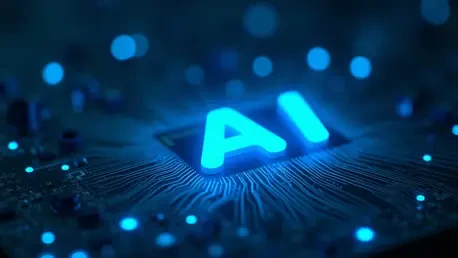In today’s rapidly evolving AI landscape, having efficient tools for data preparation is more crucial than ever. Anand Naidu, our resident Development expert proficient in both frontend and backend technologies, is here to discuss MarkItDown—an open-source project by Microsoft designed to streamline document conversion into Markdown. This interview dives deep into MarkItDown’s unique capabilities and how it aids developers in preparing data for large language models (LLMs).
What is MarkItDown and what is its primary purpose?
MarkItDown is an open-source Python utility created by Microsoft to simplify converting various file formats into Markdown. Its primary purpose is to assist in fine-tuning large language models (LLMs) and building retrieval-augmented generation (RAG) systems by transforming documents and media files into a format that’s easy for LLMs to process.
How does MarkItDown address challenges related to document conversion for large language models (LLMs)?
MarkItDown addresses these challenges by serving as a universal translator, converting diverse file types like PDFs, office documents, and multimedia content into Markdown while preserving essential document structures. This capability facilitates efficient data preparation for LLM ingestion and other AI-related workflows.
Can you explain the significance of MarkItDown being open-source?
Being open-source allows MarkItDown to engage a broad developer community, fostering collaboration and innovation. It encourages contributions that can enhance the tool’s functionality and address any limitations. Moreover, its open-source nature increases transparency and adaptability for developers needing customized solutions.
In what forms is MarkItDown available and how has it been received by the developer community?
MarkItDown is available both as a Python library and a command-line tool. It has gained substantial traction within the developer community, as evidenced by its impressive number of stars on GitHub. This indicates strong interest and approval from developers who see its value in simplifying document conversion tasks.
What types of files can MarkItDown convert into Markdown?
MarkItDown supports converting multiple file types into Markdown, including PDFs, text files, office documents, images, and audio files. This versatility makes it a potent tool for managing and processing varied data sources.
How does MarkItDown maintain document structure during conversion?
MarkItDown focuses on structure preservation by retaining elements such as headings, lists, tables, and links. This attention to detail ensures that the converted output remains clean and organized, suitable for further analysis and processing in LLM pipelines.
What technologies does MarkItDown use to extract content from images and audio files?
For content extraction from images, MarkItDown leverages optical character recognition (OCR) technology. For audio files, it employs speech recognition libraries, allowing it to transcribe spoken content into text. This multi-modal capability expands its utility across different data formats.
What are the specific problems faced by data scientists that MarkItDown aims to solve?
Data scientists often grapple with extracting information from documents in varied formats—a task that can be both time-consuming and error-prone. MarkItDown addresses these issues by offering a unified conversion solution, preserving critical document structures and supporting diverse data types, including images and audio.
Can you outline the key pain points in document conversion that traditional tools often encounter?
Traditional tools often struggle with extracting content from non-standard file types and maintaining document formatting, especially for structured elements like tables or lists. They offer limited support for multi-modal data, making it difficult to process images and audio efficiently.
How does MarkItDown’s modular and extensible architecture work?
MarkItDown’s architecture is built around the DocumentConverter class, which provides a generic convert() method. Specialized converters, inheriting from this class, manage specific file types. This modular and extensible design allows developers to easily add new converters as needed.
What role does the DocumentConverter class play in MarkItDown?
The DocumentConverter class is central to MarkItDown’s functionality, providing a blueprint for converting documents. It defines the basic operations for file conversion, with specific implementations tailored to different file types, ensuring consistent and reliable output.
How would you convert a Microsoft Excel file to Markdown using MarkItDown?
Converting an Excel file to Markdown is straightforward with MarkItDown. You would initiate a MarkItDown object and call the convert method on your Excel file. Here’s a simple example:
from markitdown import MarkItDownmd = MarkItDown()result = md.convert("example.xlsx")print(result.text_content)What additional steps are necessary to convert an image into Markdown using MarkItDown and an LLM client?
To convert an image using MarkItDown, you need to configure an LLM client to generate descriptions of the image content. This involves integrating an LLM like GPT-4o to assist with image processing. Example code looks like this:
from openai import OpenAIfrom markitdown import MarkItDownclient = OpenAI(api_key="your-api-key")md = MarkItDown(llm_client=client, llm_model="gpt-4o")result = md.convert("example_image.jpg")print(result.text_content)What are some of the multi-modal capabilities of MarkItDown?
MarkItDown can handle content from varied data sources, including text and rich media like images and audio. It integrates OCR for images and uses speech recognition for audio files, making it highly versatile in processing different data types for LLM training.
What support does MarkItDown offer in terms of multi-format file conversion?
MarkItDown supports a range of file formats such as Office files, HTML, JSON, XML, images, and audio. This broad compatibility makes it an invaluable asset for workflows requiring homogeneous data preparation for analysis or LLM ingestion.
How does MarkItDown integrate with large language models (LLMs) like GPT-4o?
MarkItDown enhances its functionalities by integrating with LLMs like GPT-4o, particularly for generating image descriptions. This integration augments its ability to process images effectively, using advanced AI techniques to interpret and convert visual data.
What advantages does MarkItDown’s in-memory processing offer?
MarkItDown’s in-memory processing significantly increases efficiency by eliminating the need for temporary files during conversion. This feature speeds up processing times and reduces storage overhead, facilitating smoother workflows.
How does MarkItDown’s plug-in architecture benefit developers?
The plug-in architecture allows developers to create custom converters for new file formats. This flexibility means they can extend MarkItDown’s capabilities to fit specific use cases, promoting innovation and adaptability.
What libraries does MarkItDown use to handle different file formats?
MarkItDown utilizes various libraries like python-docx, pandas, python-pptx, BeautifulSoup, speech_recognition, and pdfminer.six. These are instrumental in handling the diverse file formats that MarkItDown can convert.
What are some limitations of MarkItDown?
Despite its versatility, MarkItDown has limitations such as dependency on third-party libraries and challenges with processing certain PDF formats and image text extraction. Critics also note it might strip formatting from PDFs and require external LLM setups for some functionalities.
How might MarkItDown’s functions compare to those of existing third-party libraries?
MarkItDown provides a cohesive framework using existing third-party libraries but doesn’t offer the direct conversion capabilities inherent to some dedicated tools. It wraps around these libraries, offering simplified and integrated solutions while potentially lacking depth in novel feature sets.
What are some of the ongoing issues with MarkItDown noted on GitHub?
Active issues include challenges like incorrect image link extraction, certain PDF processing limitations, and the potential loss of dynamic data during HTML conversion. These issues are ongoing, with the community working on incremental improvements.
What are the primary use cases for MarkItDown?
MarkItDown serves multiple use cases, including converting documents for LLM ingestion, creating searchable knowledge bases, feeding data into text analysis pipelines, and migrating content from legacy systems to modern formats.
How does MarkItDown contribute to creating searchable knowledge bases?
By converting a variety of company files into a nice Markdown format, MarkItDown facilitates the creation of unified, searchable knowledge bases. This helps organizations manage their information efficiently and makes knowledge retrieval easier.
What role does MarkItDown have in text analysis pipelines and content migration?
MarkItDown standardizes input from various file types before they’re fed into text analysis pipelines, ensuring compatibility and accuracy. Additionally, it enables content migration by transforming legacy documents into a modern, Markdown-friendly format suitable for current documentation systems.
Why is MarkItDown considered a valuable tool for developers working with diverse data sources in AI applications?
MarkItDown is valued for its ability to unify the conversion of diverse data sources into a structured format ready for AI applications. By preserving document integrity and offering extensive format support, it greatly simplifies data preparation for AI developers.
How does MarkItDown’s MIT license contribute to its appeal for developers?
The MIT license enhances its appeal by offering a permissive legal framework that encourages widespread use and adaptation. Developers can modify and use the software in numerous projects without significant legal concerns, fostering innovation and collaboration.
Can you provide insight into how MarkItDown fits into emerging technology adoption?
MarkItDown is a key enabler in adopting emerging technologies by simplifying the complex task of data preparation. It helps bridge the gap for developers aiming to integrate structured document conversion into AI processes, facilitating smoother transitions to AI-powered workflows.









